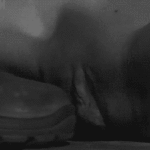him: what are your fantasies?
me: you texting me back in a timely manner
Month: December 2015
Tired a little
StandardSex was a compromise between fantasy and reality, the venn
diagram of the two brushing up against each other like melons in a fruit cart,
with the friction being about as sexy. So instead she’d learnt to find the
appeal in one and the other separately, compartmentalising her expectations and
her desires as two different entities. It made life just that little bit
easier, and it made sex just that little bit more fun.She’d tried asking, a subtle request that they pull her
hair, perhaps, before inept fingers would grab a handful far too low down, pull
far too hard, and make her yelp in exactly the wrong way. Or perhaps the grip
wasn’t so bad, but the fear was inherent in the hand, and the tug was never
more than exactly that, as if she would shatter like an expensive antique at the
slightest pressure.Then she’d tried guidance, her hand on their wrist, taking
them from the vanilla regions of her body to the perverse valleys, fingertips
brushing between her cheeks, palm hard against the meat of her. Spank me, she’d
whisper in their ear, an order dressed up like a request, need lending it the
costume. And maybe they’d pat her a little, or if she was lucky there might be
one or two good wallops in there before the hand went back to the default,
underneath her leg or up against her ribs.One long term boyfriend had had the conversation, a
confessional in a coffee shop, something that felt like a breakup but should
have been anything but. He had listened, to his credit, taken the time to try
and process what she was saying, but even as she spoke the words she could see
them dying on his ears, the meaning understood but not recognised, that same
interest not shared. It had taken a little effort not to cry. The consolation
was three clumsy attempts at creating what she had talked about, but if
anything the way he was making the reality bleed into her fantasies felt like
it was killing both, and on the third occasion she had to ask him to stop.It became something internalised, tucked away in the
recesses where it wouldn’t get any sunlight to grow, but also wouldn’t be
debased or destroyed by incorrect attention. It wasn’t something she hoped for,
because cultivating expectation only made it hurt the more when it inevitably
withered. It was why she never thought of it with him, just enjoyed the company,
relished in everything that wasn’t the sex, or the thought of sex. Besides, sex
was still fun, still had its own merits. It just felt a little… unrealised.
Like playing ‘I’m a Little Teapot’ when you could be performing ‘Flight of the
Bumblebees’.It was why, then, a shiver ran down her spine when his hand
ran over it, the trajectory shorting out her thought process, taking her out of
the kiss and making her blink a few times, as if trying to reset her mind. It
was why her hips rolled against him as his fingers slipped into her hair,
tangled themselves, and began to pull.
It was why she felt an explosion go off in her head, illuminating all she’d hid
away in darkness. It was why, when he asked if she liked it, she couldn’t do
anything but nod.
All over the world, women, for a variety of reasons, experience much higher rates of pain than men. More than 100 million Americans report living with chronic pain, and the vast majority are women. Yet, doctors discount women’s reports of pain. Both male and female doctors exhibit the same biases in treatment.
1. People have a difficult time recognizing women’s pain. Not in an abstract sense, but in an actual, practical, “Does that expression on her face mean she is in pain?” way. People are much better at reflexively decoding pain when a man’s face reflects it than when a woman’s does. This is also true when a white person is experiencing pain versus a black person.
2. Gender bias and stereotypes infuse the way doctors treat women’s pain. A 2014 survey of more than 2,000 women, conducted by the National Pain Report and For Grace, a non-profit devoted to finding solutions for women in pain, found that three quarters of the women surveyed were told at least once by a doctor that nothing could be done for them and that they would just have to live with chronic physical hurt.
- 57% report being told by a doctor, “I don’t know what’s wrong with you.”
- 51% report having doctor’s say, “You look good, so you must be feeling better.”
- 45% reported that they were told, “The pain is all in your head.”
My personal favorites? “You are too pretty to have so many problems,” and “You can’t be too sick because you have makeup on and you are not in your sweatpants.”
3. Men and women experience different kinds of pain differently, but women report feeling more intense pain. However, when men report pain, they are treated more seriously. Doctors, for example, are more likely to prescribe painkillers for men, but sedatives for women. One study showed that men are also more likely to be sent to intensive care units. In an extensive essay on pain last year, Judy Foreman shared research showing that women are far less likely to get hip or knee replacements and that doctors are disinclined to think that women have heart problems, even when they have symptoms. Women are more likely to seek treatment for chronic pain, but are also more likely to be inadequately treated by health care providers.
4. Despite the fact that men have higher rates of recognized trauma leading to post traumatic stress disorder, women are more than twice as likely to have anxiety disorders and to report fatigue than men. Women’s higher rates of symptoms for PTSD has puzzled doctors, who frequently write the effects off to women’s nerves or over-emotionality. However, researchers have documented the link between concerns about physical safety and psychological harm. Consider, for example, that before puberty, boys and girls experience depression and anxiety at similar rates, but, upon puberty, when street harassment, awareness of physical vulnerability and rape begin, girls’ are up to six times as likely to suffer from anxiety as teenage boys.
Researchers have now concluded that women are more likely to have a whole host of physical problems due to the accumulated effects of hyper-vigilance, sexual objectification, and harassment. Recently, scientists at the University of Mary Washington’s Psychology Department showed the effects of sexual harassment on women, effects that are even stronger in women who have been sexually abused. They concluded that women are experiencing “insidious trauma,” something most doctors are oblivious about. Lastly, medical research continues to fail to take sex-specific issues into account, mistakenly assuming that male, mostly white male, test subjects sufficiently represent all of humanity. This discriminatory skewing of research, in favor of male physiology, has considerable impact on women’s health, including pain and pain mitigation. For entire article.
I went to the doctors for my chronic PCOS pain and saw a male doctor I’ve never seen before. He told me it was all in my head, and all I needed to do was to “lose some weight and try thinking more positively” 👌🏼😒
^^ SAME. It was awful. I saw a new doctor last week and he just dismissed everything. I was gonna reblog just for the OP but I’m sure so many of us can echo this.






